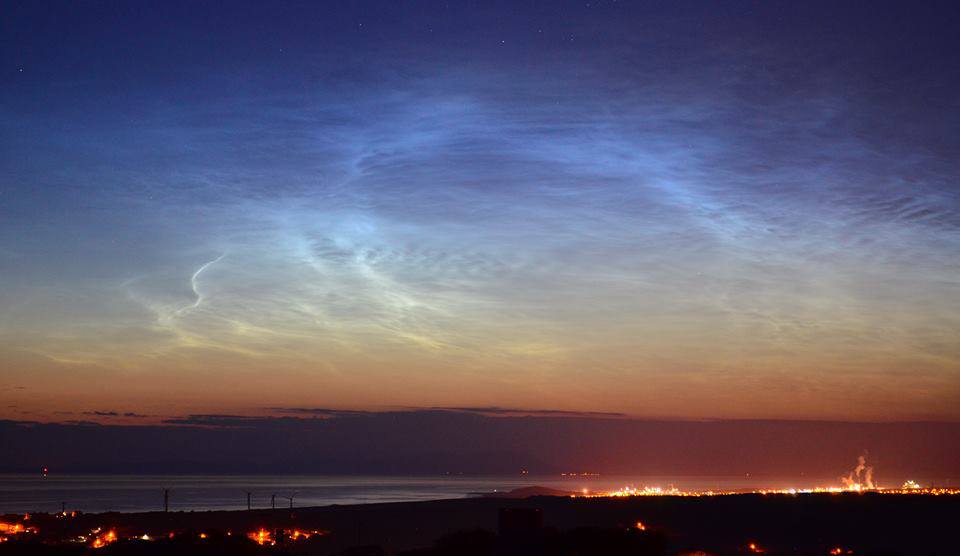One of the exciting possibilities from last year’s erstwhile comet celebrity – Comet C/2012 S1 ISON – was that the comet might spawn a meteor shower, visible this month. Will it? Astronomers agree: the chance is extremely remote that we’ll see meteors from Comet ISON in January 2014. Still, nature can be unpredictable, and the sky often surprises us. So, in case you want to try your luck, follow the links below to more info.
Comet ISON is dead. Why expect to see anything at all?
Meteors – or something else – from Comet ISON?
What are the best dates to watch again?
Will Comet LINEAR produce a new major meteor shower in 2014?

Comet ISON is dead. Why expect to see anything at all? Comet ISON is gone. If you joined the excitement on the days around November 28, 2013, you saw the comet sweep past the sun … and quickly disintegrate. Even the Hubble Space Telescope hasn’t found any sign of it; no one has.
Still, astronomers are optimists. They’re always hoping to see something awesome in the night sky. Veteran meteor observer Robert Lunsford of the American Meteor Society published at amsmeteors.org on January 9, 2014, saying:
During the inbound portion of the comet’s orbit, the comet passed approximately 2 million miles from the Earth’s orbit. The Earth arrives at this point on January 15, 2014. Normally, this distance is too great to produce meteor activity on Earth.
Comet ISON was producing a large amount of dust prior to its disintegration. Some feel that despite the distance that some of this dust may still reach the Earth …
Lunsford went on to say that meteor observers are encouraged to view any possible display of meteor activity despite the full moon on January 15.

Meteors – or something else – from Comet ISON? But a meteor shower from Comet ISON has always been a remote possibility. Last April, NASA published an article about a possible ISON meteor shower, based on calculations made by meteor researcher Paul Wiegert of the University of Western Ontario. He used a computer to model the trajectory of dust ejected by Comet ISON, and his findings suggested a possible, unusual meteor shower. Wiegert was quoted as saying:
For several days around January 12, 2014, Earth will pass through a stream of fine-grained debris from Comet ISON. The resulting shower could have some interesting properties.
He went on to point out that the individual dust particles from Comet ISON are calculated to be only a few microns in size. That’s too small to produce meteors bright enough to be visible to the unaided eye. Although the dust particles are calculated to be hitting Earth’s atmosphere at a speed of 50+ km/s (more than 125,000 mph), the particles are so small that Earth’s upper atmosphere will rapidly slow them to a stop. Wiegert said:
Instead of burning up in a flash of light, they will drift gently down to the Earth below.
If that’s the case, we won’t see meteors from Comet ISON, but we might see what are called noctilucent clouds – also called night-shining clouds. They are icy clouds that glow electric-blue as they float more than 80 km above Earth’s poles. People at high latitudes see them a certain times of year, and they are also very beautiful.
What’s more, Wiegert said, the invisible rain of dust from Comet ISON, if it occurs, would be very slow. It might take months or even years for fine dust to settle out of the high atmosphere. Months or years or noctilucent clouds? In my book, that would be a fair trade for no meteor shower.

What are the best dates to watch again? Robert Lunsford of the American Meteor Society said that January 15, 2014 was the best date to watch for possible meteors from Comet ISON. Paul Wiegert of the University of Western Ontario said “several days around January 12.” So you can see that there’s a lot of uncertainty here. If you really intend to watch, try January 12, 13, 14, and 15. What the heck? You probably won’t have clear skies on all of those nights, anyway.
Lunsford, who created the chart above, suggests that the radiant point for this possible meteor shower from Comet ISON would lie in the constellation Leo the Lion. Leo rises during early evening hours now and is highest in the sky near 2 a.m. local standard time (that’s around 2 a.m., no matter where you are on Earth).
If we do get a meteor shower from ISON, he wrote:
These meteors, if any, would strike the atmosphere at a speed of 51 km/second, which is a medium-fast meteor with an average duration of less than 1 second.
Good luck, you wild and crazy meteor-watcher, you!
Bottom line: We are unlikely to get a meteor shower from Comet ISON. But that won’t keep veteran meteor-watchers from trying to observe a possible shower. Best dates to watch are the nights from January 12-15, 2014. You can begin watching during the evening hours, but the radiant in the constellation Leo is highest in the sky around 2 a.m. no matter where you are on Earth. If we don’t get any meteors, it’s still possible we’ll have an increase in noctilucent or night-shining clouds, created in the dust left behind by Comet ISON.











